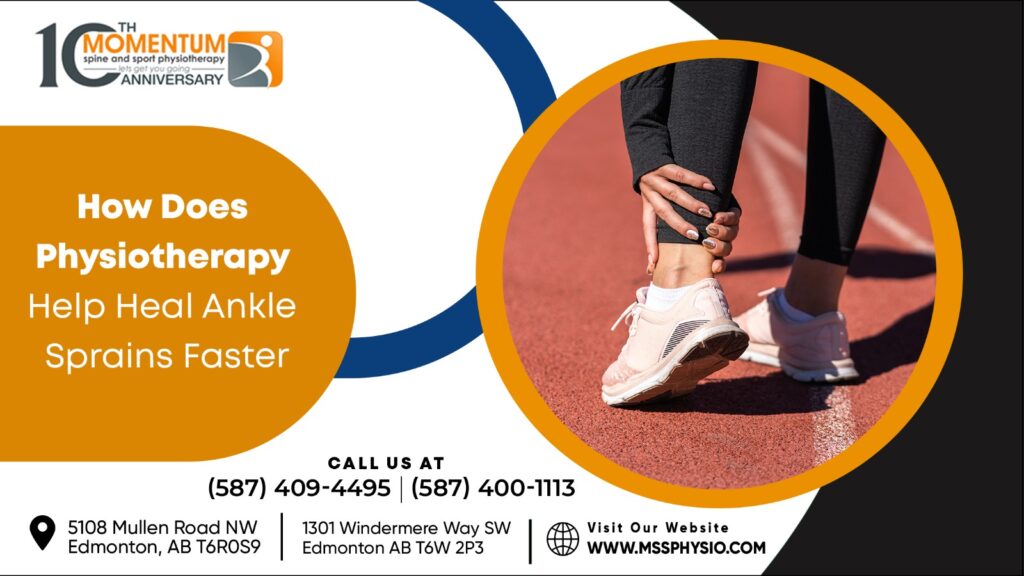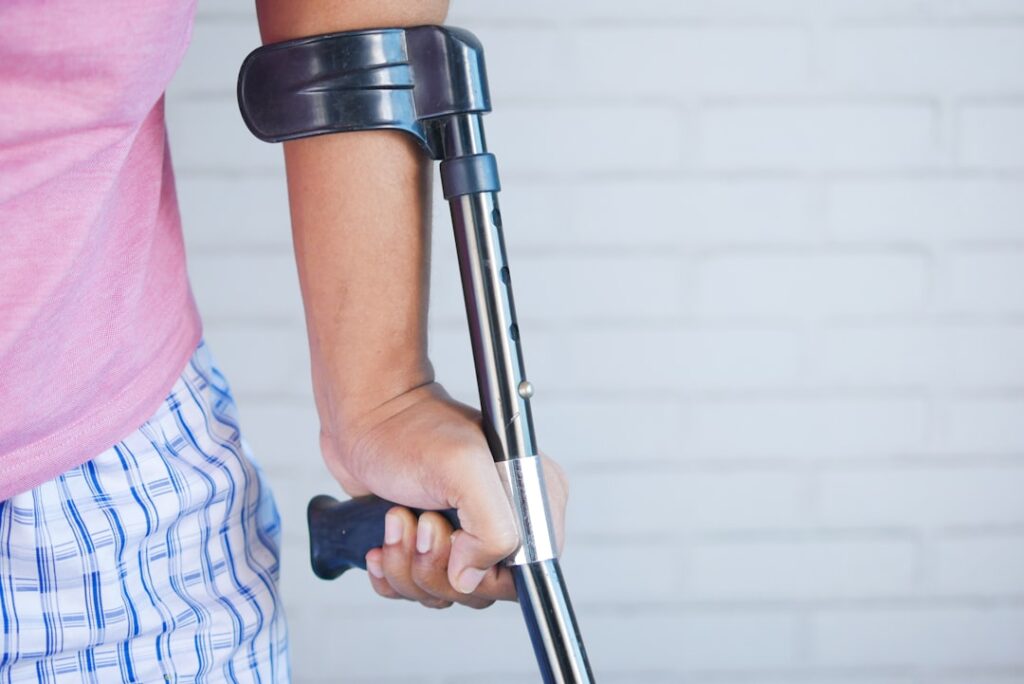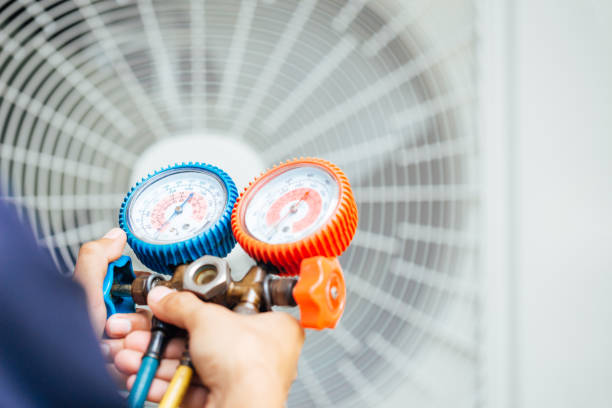Ankle sprains are a frequent injury among athletes and active individuals, often leading to pain, swelling, and a frustrating interruption in physical activities. To accelerate healing and return to sport, many turn to sports physiotherapy. Sports physiotherapy in Windermere combines cutting-edge techniques with personalized care to effectively treat and rehabilitate ankle sprains. This specialized form of athletic physiotherapy focuses on restoring strength, flexibility, and balance to the injured ankle, employing a variety of therapeutic modalities.
By addressing the biomechanics of movement and enhancing joint stability, sports physiotherapy in Windermere ensures that athletes can safely return to their peak performance levels.
Immediate Care and Assessment
The initial approach to managing an ankle sprain involves proper assessment and immediate care. Sports physiotherapists follow the RICE protocol—Rest, Ice, Compression, and Elevation—to reduce swelling and pain shortly after the injury. An accurate examination is crucial to determining the extent of the injury and tailoring an appropriate treatment plan.
Manual Therapy
Once the acute phase has passed, manual therapy techniques are introduced to promote mobility and decrease pain.
Mobilization
This technique involves the physiotherapist applying gentle, controlled movements to the ankle joint to improve its range of motion. This is particularly effective in restoring joint functionality and reducing stiffness accompanying an ankle sprain.
Massage
Soft tissue massage is another key component of manual therapy. It focuses on the areas around the injured ankle. This method helps reduce swelling and accelerate the healing process by enhancing the circulation of blood to the affected area.
These manual therapies are integral in transitioning patients from initial injury recovery to more dynamic therapeutic exercises, ensuring a smoother rehabilitation process.
Therapeutic Exercises
Rehabilitation exercises are necessary for restoring strength and flexibility to the injured ankle. Sports physiotherapists design exercise programs that include:
Strengthening Exercises
The objective of strengthening exercises is to build up the muscles surrounding the injured ankle, providing better support and reducing the risk of future sprains. Key exercises include:
- Toe Raises: This exercise involves standing flat-footed and then raising onto the toes, holding the position briefly before lowering back down. This movement strengthens the calf muscles, which play a significant role in stabilizing the ankle.
- Resistance Band Exercises: A resistance band adds tension and provides resistance as the foot moves in various directions. Common movements include pushing the foot outward against the band (eversion), pulling it inward (inversion), and pushing down (plantar flexion), all of which target different aspects of the ankle and lower leg muscles.
Balance and Proprioception Training
Improving balance and proprioception (the body’s ability to sense the position and movement of joints) is crucial for preventing re-injury, especially in dynamic environments like sports.
- Balance Board Exercises: Performing exercises on a balance board challenges the ankle’s stability. Simple activities such as standing on the board, maintaining balance, or performing squats can significantly improve proprioceptive abilities and ankle strength.
- Single-Leg Stance: Standing on one leg at a time forces the ankle to stabilize the body, enhancing proprioceptive feedback and strengthening the ankle’s supportive structures.
Functional Training
As recovery progresses, the focus shifts to functional training, which integrates the healed ankle into sport-specific activities. This includes:
- Sport-Specific Drills: Tailored drills that mimic the actions required in an athlete’s sport are introduced. For example, a soccer player might perform dribbling drills that require sharp turns and pivots, which test the ankle’s ability to withstand typical sports-related movements.
- Graduated Return to Play: This structured approach allows athletes to return to their sport gradually. It begins with low-intensity activities and slowly increases in complexity and intensity. This phased approach ensures the ankle can handle the load without risk of re-injury. Throughout this process, the physiotherapist closely monitors for any signs of pain or discomfort, which may indicate undue stress on the healing ankle.
Preventative Strategies
Proper Footwear
Choosing the proper footwear is crucial for ankle stability and injury prevention, particularly in sports that involve running, jumping, or quick directional changes.
- Footwear Selection: Sports physiotherapists advise athletes on selecting shoes that offer the correct balance of support, cushioning, and flexibility. The choice of shoes can vary significantly depending on the sport and the athlete’s needs. For example, basketball shoes generally provide more ankle support than running shoes, designed more for forward motion.
- Fit and Functionality: Shoes that are too large or small can increase the risk of ankle sprains. Functional considerations like arch support and heel height should also match the athlete’s foot type and biomechanics.
Bracing and Taping Techniques
Bracing and taping are additional preventative measures used to reinforce the ankle during activities that pose a high risk of injury. These techniques help stabilize the ankle and limit excessive movement that could lead to sprains.
- Ankle Braces: Braces provide physical support and are particularly recommended for athletes who have experienced previous ankle sprains or have inherent weakness in their ankle joints. Different braces offer various support levels, from rigid designs that restrict motion to more flexible supports that allow more movement but still provide reinforcement.
- Taping Techniques: Sports physiotherapists teach athletes to tap the ankle, a skill that they can perform themselves or with the help of a teammate or coach. Proper taping involves wrapping the ankle in a way that mimics the support structure of the ligaments. The most common taping techniques include the stirrup wrap and the figure-eight wrap, both of which help prevent the ankle from turning inward, the most common motion that leads to sprains.
Swift Recovery from Ankle Sprains with Physiotherapy
At Momentum Physiotherapy, our approach to sports physiotherapy is specifically designed to address and expedite the healing process for ankle sprains. By implementing targeted sports injury physiotherapy techniques, we help athletes recover faster and strengthen their ankles to prevent future injuries. If you’re dealing with an ankle sprain and want to get back on your feet as quickly as possible, consider contacting Momentum Physiotherapy. Let us help you navigate your recovery with the expertise and care you deserve through sports physiotherapy in Windermere.
Keywords: ankle sprains, sports physiotherapy, sports physiotherapy Windermere, sports physiotherapists, sports injury physiotherapy, athletic physiotherapy, Momentum Physiotherapy





